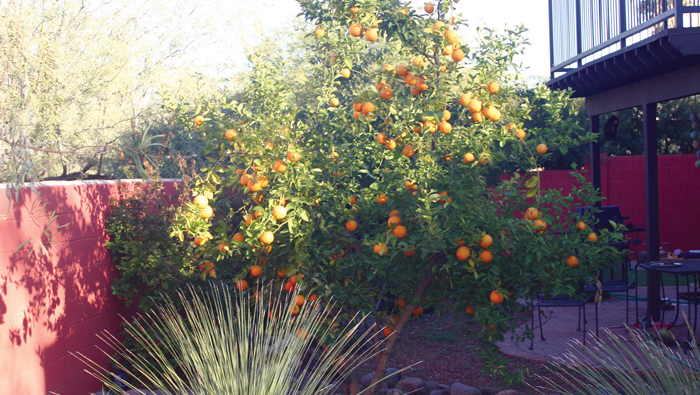When life gives you lemons…make lemonade.
Good advice for Arizona gardeners growing citrus.
“Technically, we’re famous for it. It is one of the ‘5 Cs’ of Arizona: Cattle, Copper, Citrus, Cotton and Climate,” says Peter Warren, an urban horticulture agent specializing in entomology, pest management and environmental horticulture at The University of Arizona’s Cooperative Extension in Pima County. Warren says he receives about a dozen questions a month from the public about citrus, via phone calls and emails.
“Traditionally it’s been grown here a lot. It’s a favorite backyard plant. Especially for folks who’ve moved here from elsewhere, to be able to grow citrus and eat grown fruit is a big deal,” says Warren.
Citrus fruits are also among Israel’s most prominent agricultural branches.
One of the more well-known fruits from Israel is the citron. Popularly known by its Hebrew name, the etrog is one of the “four species” associated with the festival of Sukkot.
Not just popular in Israel…citrus is very popular in Arizona, too.
“Because citrus is sensitive to frost and freezing, places like Maricopa County and Yuma are ideal for growing citrus,” says Warren. He says citrus thrives in places with lower elevations and higher temperatures. Citrus can even do well in Tucson, which can be cooler than Yuma or Maricopa County, as long as trees are covered during freezes. But while our warm temperatures are ideal for citrus, our soil may not be.
“These desert soils. There’s not a lot in there for a non-native plant,” says Warren.
That means not a lot of nutrients. And without nutrients – most likely, no fruit.
“If you just watered a citrus tree, it wouldn’t do well,” says Warren.
That’s why fertilizing is key, and this is an important time of year to do that.
Warren suggests fertilizing three times a year if your tree is in the ground, monthly if you have it in a container.
The optimum times to fertilize your citrus:
• January/February
• March/April/May/June (for oranges, tangerines and grapefruit) or
• August/September (for lemons and limes)
Warren says to make sure the fertilizer you use has nitrogen, which is very scarce in our desert soil and the most mobile element in a complete fertilizer.
Based on how much nitrogen is in the fertilizer and the size of the tree, you can do the math to figure out how much to use. Conveniently, the math homework was already done for us.
To find out exactly how much fertilizer you need for your citrus tree – minus the math – head to The University of Arizona Cooperative Extension’s website, for a simple citrus fertilization chart:
extension.arizona.edu/pubs/citrus-fertilization-chart-arizona
If you don’t have a citrus tree, but you’re interested in planting one, try this link for a few tips on what to consider:
extension.arizona.edu/pubs/low-desert-citrus-varieties
If you live in a slightly cooler climate, like Tucson, Warren recommends covering your tree with a frost cover when temperatures dip.
And make sure your citrus tree gets enough water.
“Citrus trees do best when they get water from a drip irrigation system every 7 to 10 days in the summer, down to a depth of 36 inches. In the spring and fall, change the schedule to water every 10 to 14 days and in winter, back it off to 14 to 21 days. A soil probe will help determine how deep the water is reaching,” says Warren.
Overall, citrus trees are great plants to grow, says Warren.
“It’s a great thing, I think, because people don’t always have edible trees. That’s a nice reason to have a tree; not only does it give you shade, but you can eat the fruit, too.”
Faith Schwartz has a bachelor’s degree in journalism and is an information specialist with The University of Arizona’s Cooperative Extension, sharing the science of the College of Agriculture with the people of Arizona.






